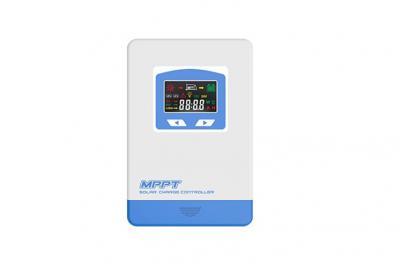
In rural areas, integrated solar street lights have become an ideal choice for lighting up rural roads, squares, and other places due to their energy-saving, environmentally friendly, and easy installation advantages. However, given the plethora of products on the market, it is crucial to choose the right integrated solar street light for rural areas. This article details some key points for making wise purchases.
Luminous Efficiency
The luminous efficiency of the light source directly affects the lighting effect of the street light. A high-quality light source made with LED chips can achieve a luminous efficiency of over 100 lumens per watt, which can effectively improve brightness and ensure good visibility of rural roads at night.
Color Rendering Index
The color rendering index reflects the light source's ability to restore the true colors of objects. In rural areas, people may engage in various activities under street lights, such as walking or working. Light sources with a high color rendering index allow people to accurately recognize the colors of their surroundings.
Conversion Efficiency
The conversion efficiency of solar panels determines their ability to convert solar energy into electrical energy. The higher the conversion efficiency, the more electrical energy can be collected under the same lighting conditions. High-quality monocrystalline silicon solar panels on the market can achieve a conversion efficiency of over 20%, while polycrystalline silicon solar panels have a conversion efficiency ranging from 17% to 19%. In sunny rural areas, choosing solar panels with high conversion efficiency ensures that sufficient solar energy can be stored during the day for nighttime lighting.
Size and Power
The size and power of the solar panel should match the overall requirements of the street light. Factors such as the width of rural roads and the duration of illumination will affect the power requirements of the solar panels. Generally, for ordinary rural roads, solar panels with a power of 30-50 watts are suitable; for large lighting areas such as squares, larger wattage solar panels are needed to ensure adequate power supply.
Battery Type
Currently, the batteries commonly used in integrated solar street lights in rural areas are lead-acid batteries and lithium batteries. Lead-acid batteries are relatively inexpensive and have mature technology, but they are heavy and have a shorter lifespan, generally 3-5 years. Lithium batteries are lighter, have a longer lifespan (up to 5-8 years), and better charge-discharge performance, although they are relatively more expensive. When choosing, it is essential to consider both cost and usage needs.
Capacity
The battery capacity determines how long the street light can provide power at night. For rural areas, the nighttime illumination duration is generally around 6-10 hours. The battery capacity should be chosen based on this requirement. For instance, if a street light has a power of 30 watts and needs to illuminate for 8 hours, it theoretically requires 240 watt-hours of energy. Considering the battery's charge-discharge efficiency and other factors, the actual chosen battery capacity should be slightly larger than the theoretical value to ensure that the street light operates normally under various weather and usage conditions.
Light Control Function
The light control function of the intelligent control system is a crucial part of the integrated solar street light in rural areas. Through light sensors, the street light can automatically turn on and off according to the ambient light intensify. When the night falls, and the light intensity decreases to a certain level, the street light automatically lights up; when the day breaks and the light intensity increases, the street light automatically turns off. This not only ensures that the street light provides illumination when needed but also avoids unnecessary power consumption during the day, effectively extending the lifespan of the battery and light source.
Time Control Function
In addition to the light control function, the time control function is also practical. It can set the street light's illumination duration according to different seasons and the living habits of rural residents. For example, during summer nights, when it stays dark longer, the illumination time can be extended; during shorter winter nights, the illumination time can be shortened. By reasonably setting the time control function, the energy utilization efficiency of the street light can be further optimized.
In conclusion, when selecting an integrated solar street light for rural areas, one needs to consider various factors, such as the light source, solar panels, batteries, and intelligent control system. Only by fully understanding these key purchasing points can one choose suitable, reliable-quality integrated solar street lights that meet rural environment and lighting requirements, bringing brightness and safety to rural nights.


